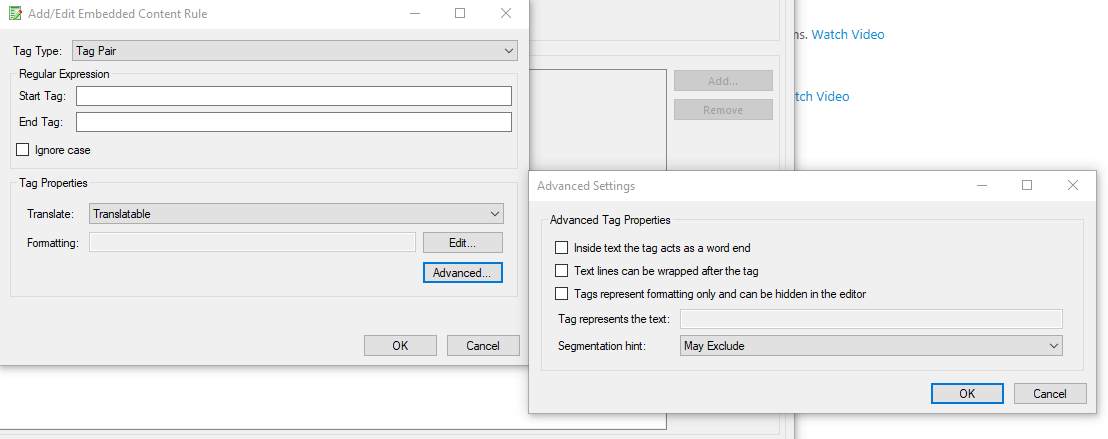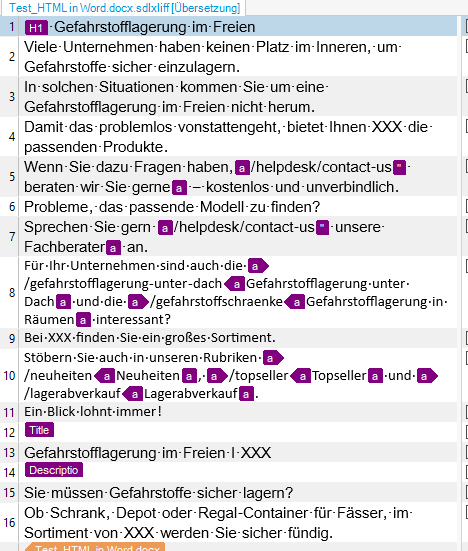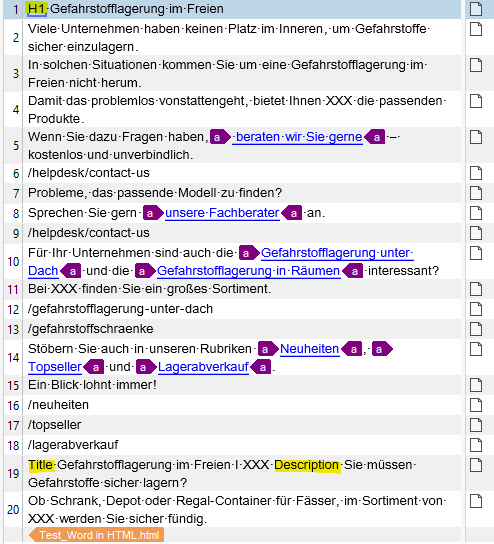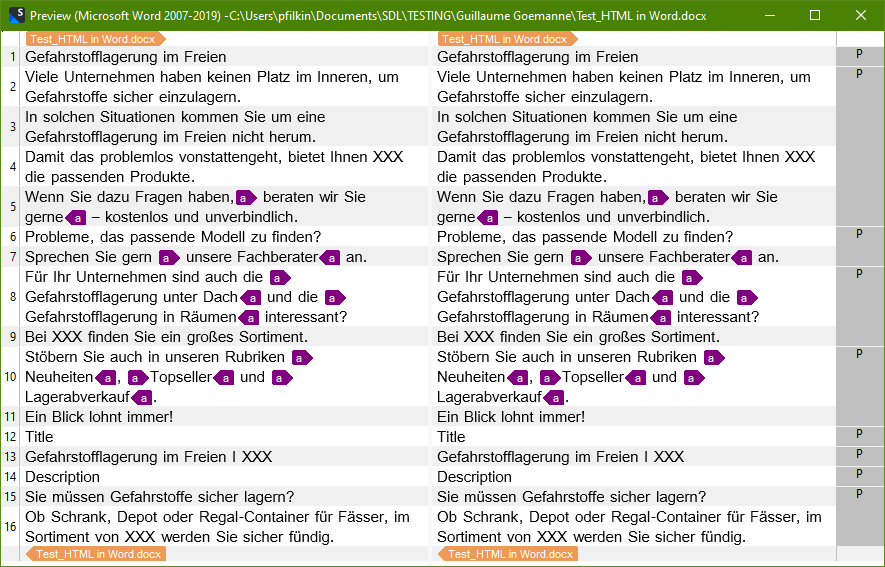Dear Trados community,
I'm currently preparing a Word file in which there are HTML tags. Those tags are easily converted into tags with the embedded content function, but here's the thing: the <a href> tag contains text thatneeds to be translated.
Therefore, I've listed all the HTML tags separately, so they are treated differently and the <a href> tag's content can be translated in Studio (cf. pictures below). However, having these passages in the middle of a normal sentence not only breaks the flow but doesn't help the TM. The translators will have to research the links every time they appear in the middle of a segment and they'll never count towards a 100% match.


Long story, short question: is it possible to have the <a href tag> as a non-editable purple tag in the segment it appears, but extract its content to a separate segment below?
A bit similar to how URL hyperlinks also have their own segment, when the hyperlink tags are in the text segment.
Looking forward to help!
Guillaume
Generated Image Alt-Text
[edited by: Trados AI at 3:13 PM (GMT 0) on 1 Mar 2024]


 Translate
Translate






